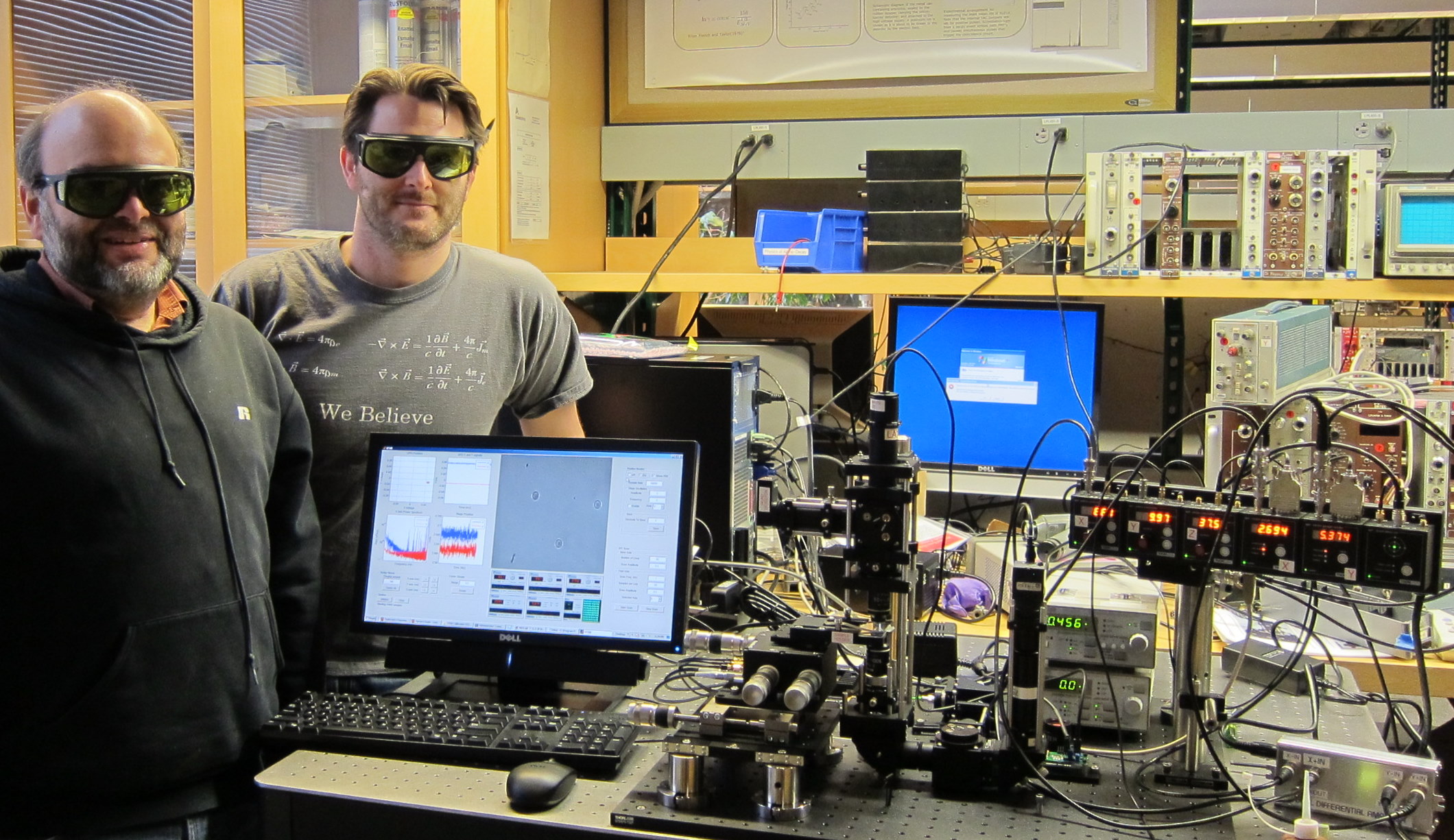|


An optical trap or "optical tweezers" is a device used to apply piconewton sized forces on micron sized objects under a microscope using a highly focused light beam. It can be created by applying a precisely focused laser onto a dielectric material. It allows very detailed manipulations and measurements on several interesting systems in the fields of molecular and cell biology and thus acts as a major tool in biophysics. They are used in biological experiments ranging from cell sorting to the unzipping of DNA. Similar principles are also used in physical applications such as atom cooling. In this experiment, you will measure the Brownian motion of a silica microsphere in aqueous solution, both testing the theory of statistical mechanics and calibrating the ``spring constant" of the trap. Then, using the calibrated trap, you will measure forces in biological systems, such as the actin-myosin molecular motors of vesicle transport in onion cells, the E. coli flagellar motor, or the restoring force of a stretched DNA molecule.
Student Wiki: Optical Trapping
Download
Lab Guide outline in PDF format
(certificates
required)


|